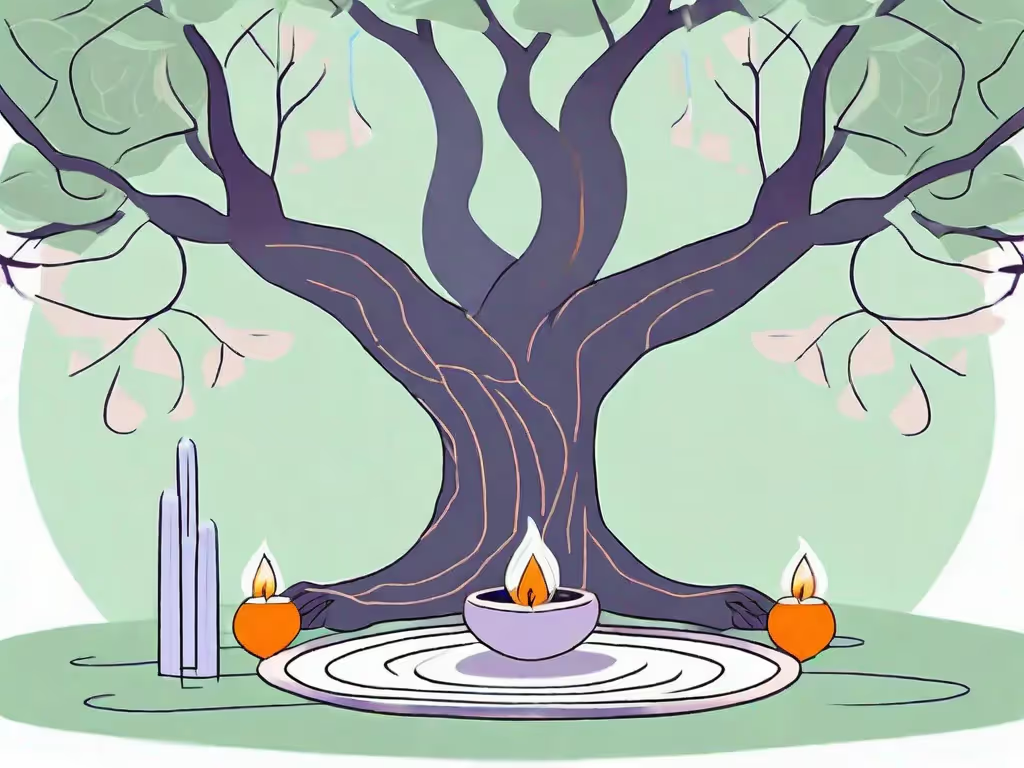Mantras, a cornerstone of many meditation practices, are more than just simple phrases or words. They are powerful tools that can help individuals focus their minds, connect with their inner selves, and achieve a higher state of consciousness. This article will delve into the world of mantras, exploring their origins, their uses, and their profound impact on meditation and overall well-being.
Whether you are a seasoned meditator or a beginner just starting your journey, understanding the concept of mantra can enhance your meditation experience. It can provide you with a deeper understanding of the practice and open up new avenues for personal growth and spiritual development.
The Origin of Mantras
The concept of mantra originates from ancient India, where it was a significant aspect of the Vedic tradition. The term "mantra" is derived from the Sanskrit words "manas" (mind) and "tra" (tool or instrument), thus signifying that a mantra is a tool for the mind. It is a sacred utterance, a sound, a syllable, word, or group of words believed to have spiritual power.
Mantras were initially used in religious rituals and ceremonies, believed to invoke deities and connect the physical world with the spiritual realm. Over time, their use expanded beyond religious contexts, becoming integral to various forms of meditation and spiritual practices worldwide.
The Significance of Sound in Mantras
Sound plays a crucial role in mantras. In the Vedic tradition, it was believed that the universe was created from sound, and thus, sound has the power to influence reality. Each mantra is associated with a specific sound vibration, which is believed to have a particular effect on the mind and body when chanted or meditated upon.
For example, the mantra "Om," often used in yoga and meditation, is considered the primordial sound from which the universe was created. When chanted, it is believed to resonate with the natural vibrations of the universe, helping to align the individual's energy with that of the cosmos.
Types of Mantras
There are numerous types of mantras, each with its unique purpose and effect. Some mantras are chanted aloud, while others are silently repeated in the mind during meditation. Some are specific to certain traditions or practices, while others are universal and can be used by anyone, regardless of their religious or spiritual beliefs.
Here are a few types of mantras commonly used in meditation:
Bija Mantras
Bija mantras, also known as seed mantras, are single-syllable sounds that are powerful and potent. They are considered the source or seed of divine energy. Examples of bija mantras include "Om," "Lam," "Vam," "Ram," "Yam," and "Ham."
Each bija mantra is associated with a particular chakra or energy center in the body. For instance, "Lam" is the bija mantra for the root chakra, which is associated with feelings of safety and grounding.
Maha Mantras
Maha mantras are longer mantras that are often chanted in a call-and-response format during group meditation or kirtan (a form of devotional chanting). The most well-known maha mantra is the Hare Krishna mantra, which is chanted as follows: "Hare Krishna, Hare Krishna, Krishna Krishna, Hare Hare, Hare Rama, Hare Rama, Rama Rama, Hare Hare."
This mantra is believed to invoke divine love and devotion, bringing about a state of bliss and inner peace.
Using Mantras in Meditation
Mantras can be used in various ways during meditation. One common method is mantra repetition, also known as japa meditation. In this practice, the meditator silently repeats the mantra in their mind, focusing their attention on the sound and vibration of the words.

This repetition helps to quiet the mind, reducing the flow of thoughts and allowing the individual to enter a deeper state of meditation. It also helps to cultivate mindfulness, as the individual must remain fully present and attentive to the mantra.
Choosing a Mantra
Choosing a mantra for meditation can be a personal and intuitive process. Some individuals may feel drawn to a particular mantra because of its meaning or the feelings it evokes. Others may choose a mantra based on a specific goal or intention, such as cultivating love, peace, or clarity.
It's important to choose a mantra that resonates with you personally. The more connected you feel to your mantra, the more effective it will be in aiding your meditation practice.
How to Use a Mantra
Once you have chosen a mantra, you can begin to incorporate it into your meditation practice. Start by finding a quiet and comfortable place where you won't be disturbed. Sit in a comfortable position, close your eyes, and take a few deep breaths to center yourself.
Begin repeating your mantra silently in your mind. Try to focus your attention on the sound and vibration of the mantra. If your mind begins to wander, gently bring your focus back to the mantra. Continue this practice for as long as you wish.
The Benefits of Mantra Meditation
Mantra meditation offers numerous benefits, both physical and psychological. On a physical level, it can help to reduce stress and anxiety, lower blood pressure, and improve sleep quality. It can also enhance immune function and promote overall health and well-being.
On a psychological level, mantra meditation can help to cultivate mindfulness, improve focus and concentration, and enhance emotional well-being. It can help to quiet the mind, reduce negative thought patterns, and promote a sense of peace and tranquility.
Scientific Research on Mantra Meditation
Scientific research has provided evidence supporting the benefits of mantra meditation. Studies have shown that it can induce changes in the brain, leading to improved cognitive function, reduced stress levels, and enhanced emotional well-being.
For example, a study published in the Journal of Cognitive Enhancement found that mantra meditation can improve attention and working memory. Another study published in the Journal of Psychiatric Research found that it can reduce symptoms of depression and anxiety.
Conclusion
In conclusion, mantras are powerful tools that can enhance your meditation practice and promote overall well-being. Whether you are a seasoned meditator or a beginner, incorporating mantras into your practice can provide a deeper, more enriching meditation experience.

Remember, the key to successful mantra meditation is consistency and patience. It may take time to notice the benefits, but with regular practice, you can experience profound changes in your mind, body, and spirit.



.webp)






.avif)

%20(1).avif)


.avif)
.avif)
.webp)


.avif)


















































































































.avif)

















.svg)









